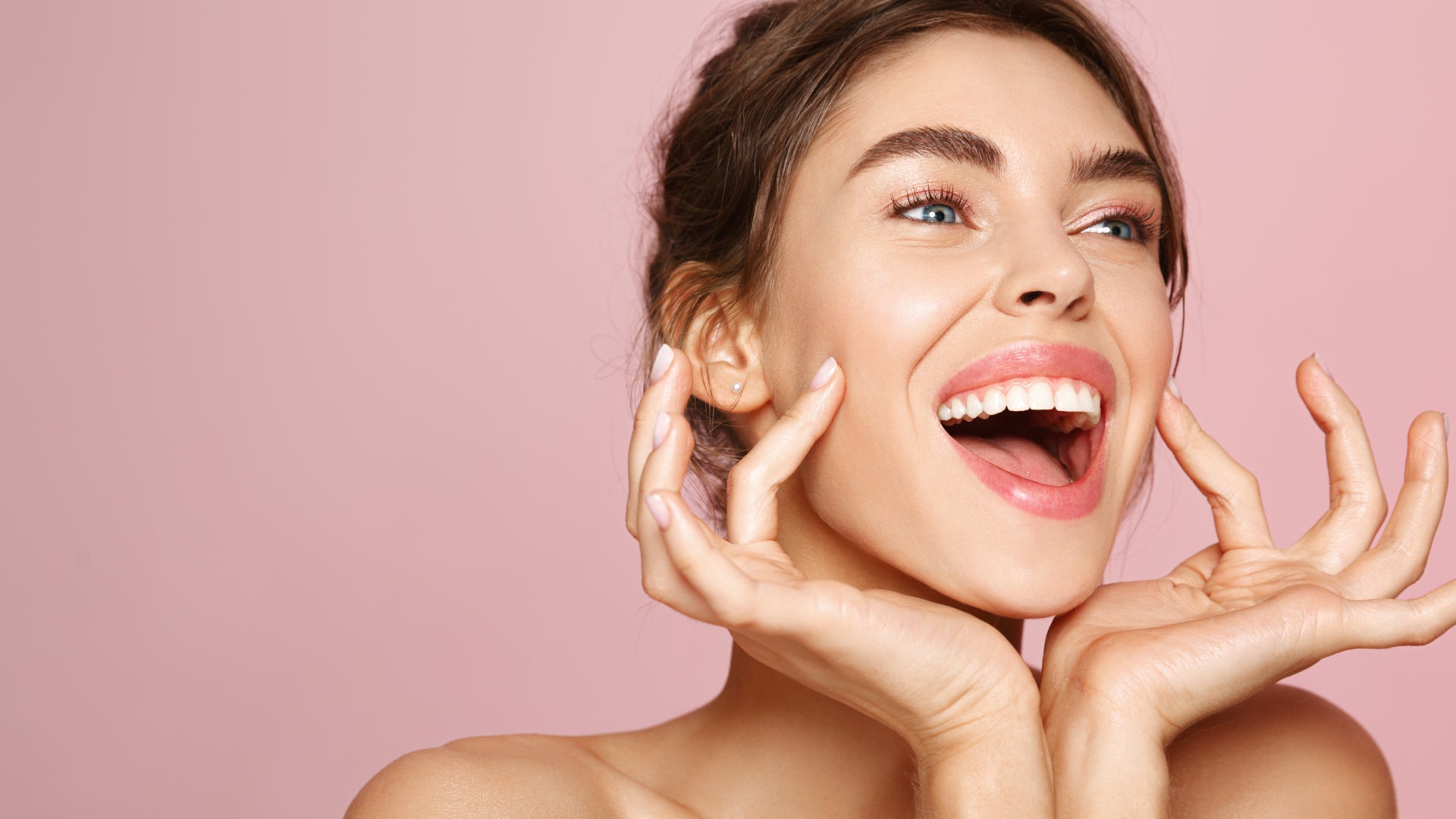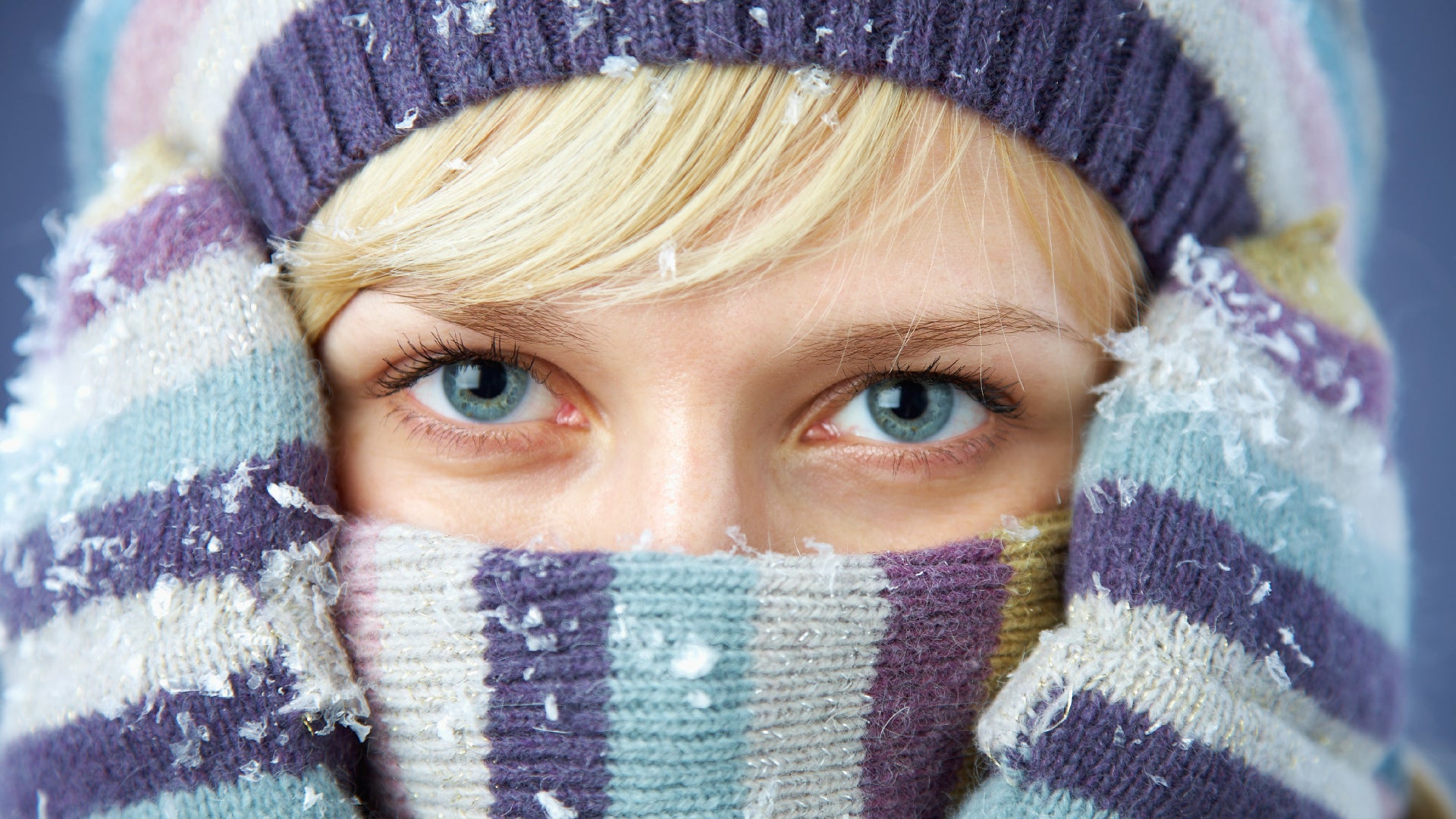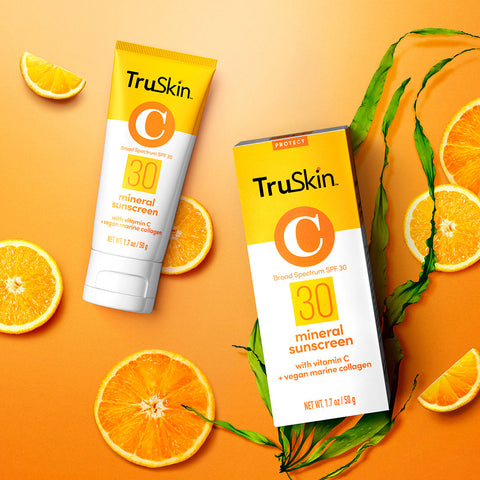
True Radical Honesty From Our Community
What To Do If You Hate Those Fine Lines Around Your Lips
Read MoreAdvice for all of your skin care needs
- all articles
- Acne
- Anti-Aging
- Collagen
- Combination Skin
- Company Announcements
- dry skin
- Exfoliation
- Eye Care
- Facial Redness
- Grooming
- Holidays
- Hyaluronic Acid
- Niacinamide
- Oily Skin
- Retinol
- Sensitive Skin
- Skincare
- Skincare Guide
- Skincare Ingredients
- Skincare Routine
- Skincare Tips
- Sun Protection
- Toner
- Vegan Skincare
- Vitamin C
- view all
- Acne
- Anti-Aging
- Collagen
- Combination Skin
- Company Announcements
- dry skin
- Exfoliation
- Eye Care
- Facial Redness
- Grooming
- Holidays
- Hyaluronic Acid
- Niacinamide
- Oily Skin
- Retinol
- Sensitive Skin
- Skincare
- Skincare Guide
- Skincare Ingredients
- Skincare Routine
- Skincare Tips
- Sun Protection
- Toner
- Vegan Skincare
- Vitamin C
-
Skin redness is no joke, especially when it just won’t go away. But there are plenty of ways to deal with a red face – whatever the cause.
Facial redness is one of those things that’s so… very… frustrating. Of course, temporary flushing can be attributed to all manner of daily triggers like a vigorous workout or a particularly embarrassing/nerve-wracking/thrilling event. But that kind of redness isn’t the end of the world – it is temporary, after all.
When red skin becomes more of a permanent issue, however and, worse still, comes complete with other irritating concerns like itching, heat, bumps or flaky skin, something else is clearly going on.
What Is Facial Redness?
Also known as erythema, skin redness occurs when blood vessels beneath the skin dilate, causing blood to the rush to the surface. This increased blood flow can be caused by many factors but when it’s persistent or severe it’s usually a sign of some kind of inflammation or irritation.
The 5 Most Common Culprits Of Facial Redness
1. Rosacea: This chronic (and surprisingly common) inflammatory condition causes persistent redness along with bumps, hard pimples and itching. Rosacea is often genetic and can lay dormant until triggered by external factors.
2. Irritation: Some skin types are way more reactive making them prone to redness from things like potent skincare, dietary choices and emotional stress, to name just a few.
3. Acne: Acne is the most common skin problem in the US, affecting around 50 million individuals every year. It occurs when the pores becomes blocked by oil, dead skin cells and bacteria.
4. Psoriasis: According to the National Psoriasis Foundation, psoriasis is a chronic disease where skin cells build up too quickly, causing redness and scaly, itchy patches.
5. Dermatitis: Two main types of dermatitis lead to facial redness – atopic and contact. Atopic dermatitis (aka eczema) is a genetic condition and results in itchy, sudden rashing, whereas contact dermatitis occurs when the skin comes into direct contact with an irritant or allergen.
How To Reduce Redness At Home
Let’s get one thing straight: if you can’t find relief from your facial redness, it’s wise to consult a physician for a proper diagnosis on your skin health. Conditions like rosacea can’t be cured, you see, and they require careful management. Plus, if you try to self-diagnose you could get things all kind of wrong – often making matters worse.
There are also plenty of proven strategies for calming facial redness and skin inflammation with smart, sensitive skincare choices. Read on for the most important must-dos and don’ts.
DO Avoid Potentially Irritating Ingredients
According to the American Academy of Dermatology (AAD), fragrance is one of the most common causes of contact dermatitis which makes it a massive no-no in your skincare regime.
Of course, most people have no issues with fragrances in their beauty products, but if you have sensitive skin that’s easily prone to redness, you’d be wise to avoid synthetic fragrances completely. You should also tread carefully with natural fragrances. Although rare, certain essential oils can cause reactions on extremely sensitive skin.
Synthetic dyes, parabens (preservatives) and strong sulfates like SLS and SLES can also be irritating for some people so look out for these on skincare labels and avoid them if you think they’re causing your skin to flare up.
DON’T Over-Exfoliate
One of the biggest mistakes you could make is to exfoliate sensitive skin too often and too vigorously. Don’t get us wrong, exfoliating is a fantastic way to encourage healthy cell turnover, remove dead skin cells and boost the results from the rest of your skincare routine. But too much exfoliation can weaken your skin’s protective barrier, stripping away all the good stuff that helps your skin remain strong, hydrated and healthy. This makes your skin extremely vulnerable to the outside world and basically asks irritation and redness to do their worst.
Listen to your skin (it’ll tell you when it’s unhappy!) and limit your exfoliation to whatever your skin is able to tolerate. Once a week is often enough. Also, choose gentle exfoliating formulations that avoid harsh grains or high percentages of potent acids. Both of our exfoliators are super kind to the skin and can be used as little or often as you like. We particularly love our Vitamin C Gentle Face Scrub which uses ultra fine Bora Bora white sand to gently buff your skin.
DON’T Underestimate The Powers Of A Soothing Toner
The right toner can really supercharge your skincare routine, without needing to pile on too many active (and potentially irritating) ingredients.
The basic role of toner is to remove lingering makeup, cleanser and other debris from the surface of your skin while preparing it for the next stage in your routine. But they can be so much more than that. Their high water content makes them an ideal way to cool down inflamed skin, and if you search for ingredients like aloe vera, calendula, chamomile and gotu kola these are masters at hydrating, soothing and calming the skin.
DO Apply Sun Protection Every Day
UV radiation is seriously bad news for sensitive skin that’s prone to unwanted redness flare-ups, so make sure the sun stands zero chance of getting even close to your face. We recommend applying a broad-spectrum sunscreen that contains an SPF of at least 30. Every day, for that matter. This ensures you’re well protected from both UVA and UVB rays all year long. With a hefty helping of aloe leaf juice plus 21 percent zinc oxide, our SPF 30 Mineral Sunscreen with Vitamin C is literally made for sun sensitive skin. It’s so good you will want to apply it every day.
PS: Sun-induced flushing may also be a red flag (no pun intended) that you have a sun allergy, so if your redness is persistent and comes coupled with itchiness, stinging, bumps and/or blisters seek professional advice from a dermatologist.
DO Make Calming Ingredients Your BFFs
What are the specific ingredients to look out for in a successful, sensitive skincare routine? Aloe vera is the obvious choice because it’s naturally cooling, healing, hydrating and packed with anti-inflammatory qualities. And, as a sidenote, almost all of our products contain this gentle powerhouse. Because yes, we love it that much.
Green tea is another must-have for red skin because it’s incredibly soothing and chock full of polyphenols which contain all manner of antioxidant and anti-inflammatory properties. Then there’s milk – specifically oat and rice milks – which contains tons of nourishing compounds and is great if your skin is particularly dry and sensitive.
Finally, a big shout out to niacinamide which works hard to increase the production of ceramides in the uppermost layers of your skin. This helps to strengthen the skin’s barrier function making it a game-changer for reducing inflammation and evening out red skin. Word is, niacinamide can even be an effective treatment for controlling rosacea or eczema, but if you're a sufferer of either of these conditions you should always seek professional advice before diving in head first.
Fancy introducing some of these sensitive skin, redness-reducing wonders into your skincare routine? Then try our Soothing Cleansing Milk followed by Niacinamide (B3) Facial Serum – a winning combination for red, irritated skin if ever we knew one.
DON’T Forget To Moisturize
Like a comforting hug for your skin, moisturizer is non-negotiable for all skin types. And it’s especially important if you suffer with chronic redness. A good moisturizer not only hydrates your skin but it holds all that moisture in while simultaneously ‘feeding’ your skin with essential vitamins, minerals and other nutrients that help to keep your barrier function ticking along nicely.
We recommend ceramide-rich formulas like our Firming Collagen Day Lotion, alongside healing and soothing topicals. When it comes to moisturizing, some of the best ingredients for sensitive skin are aloe (wait, did we mention that already?!), vitamin E, shea butter, squalane, glycerin and hyaluronic acid.
Fail-Safe Ways To Reduce The Appearance Of Facial Redness
read more -
No idea why you’re getting an influx of acne right now? Many lifestyle habits can trigger your breakouts – and sometimes they’re found in the most unsuspecting places.
As you know, acne is caused by one thing and one thing alone: an excess of sebum that causes your pores to become blocked with oil, dead skin cells, bacteria and other impurities. Eating too much chocolate doesn’t give you pimples. Neither does moisturizer. Sure, they can trigger breakouts if you’re genetically susceptible to them, but acne isn’t caused by uncleanliness, a poor diet or crummy skincare routine. It’s caused by blocked pores. End of.
OK, so this begs the question: why bother trying to cure them if your breakouts are totally out of your control? Well, here’s the thing. You can’t change your genes, that’s for certain. However, what you can do is keep acne-triggering factors under control to help lessen the blow. Sleeping well, reducing emotional stress and eating a healthy, well-balanced diet; all these things are important for maintaining balanced sebum and therefore reducing the likelihood of you breaking out week after week.
But there are also some less obvious reasons why you face might be suffering with regular breakouts. So if you’ve already dispensed with things like smoking, poor cleansing and too much exfoliation, but you’re still getting pimples on the reg, it might be time to look at some of the more unexpected areas of your life.
On that note, read on for five slightly more unusual causes for your breakouts.
1. Your Pillowcase
Getting enough beauty sleep is crucial for the health of your skin, but if you’re sleeping on a dirty pillowcase for a solid eight hours every night dirt and bacteria is inevitably going to build up and irritate your pores. This is especially true if you sleep on a synthetic pillowcase because man-made fibers don’t absorb sweat as effectively as natural fibres like cotton or linen.
The answer? Go natural all the way, for starters. Also, cleanse and moisturize your skin before bed to reduce the amount of grime getting on your pillowcase. Tea Tree Super Cleanser+ is a great acne-fighting cleanser that balances and clarifies your pores. Follow this with Retinol Moisturizer to lightly hydrate and moisturize your skin while boosting cellular turnover to keep your pores free of dead skin cells.
Finally, wash your pillowcase every three or four days. And ditto, your face towel. Old, dirty towels that are used by the whole family for drying their hands and who-knows-what-else are another breeding ground for germs and bacteria. Do you really want to be swiping this all over your freshly cleansed skin? Thought not. So, invest in a couple of cotton face towels for you and you alone and wash them every other day.
2. Your Makeup & Hair Products
Your skincare routine might be spot on, but what about your makeup and hair products? Rich hair conditioners, for example, are notorious for containing heavy ingredients like cocoa butter and coconut oil which, granted, are incredible for moisturizing your precious locks, but are not so great for acne-prone skin. Of course, we know you’re not smothering your face with conditioner but still, it can settle on your face when you rinse your hair so always cleanse your skin after, never before conditioning.
Makeup can similarly clog up your pores, especially if you use formulations that contain oil. So don’t do that. Instead, look out for noncomedogenic products (this means they’re less likely to block pores) and use powder rather than liquid formulations whenever possible.
3. Your Workout Routine
Do you love to get a good sweat on when you’re working out? High fives to you. However, allow all that sweat and grime to sit on your skin and your pores are going to clog up quicker than your instructor can say ‘hit the floor for ten push-ups.’
Cleanse your skin thoroughly and swiftly after exercising (the longer you leave your skin doused in sweat and grimy workout gear, the more bacteria is likely to breed), and always use a mild but effective cleanser that helps to detoxify your skin without drying it out. Our Charcoal Clarifying Cleanser is a goodie as it harnesses the powers of coconut-derived activated charcoal which destroys skin-smothering impurities to offer a deep, gently purifying clean every time.
4. Your Winter Cover-Ups
Any fabric that rubs against your skin can lead to unwanted issues in the long-term. Remember how face masks were causing ‘maskne’ back in the pandemic? This was all due to friction from the mask combining with the obvious culprits of sweat, dirt, oil, bacteria and humidity which caused dryness, irritation and pimples.
Thankfully, for most of us, the days of having to wear a mask 24/7 are over. However, if you spend a lot of time outdoors in the winter and like to wrap yourself up in woollen hats and thick, heavy scarves, these can cause similar problems, trapping sweat and increasing friction around your chin, jaw, neck and forehead.
To help reduce breakouts caused by beanies, scarves (and even turtleneck sweaters), avoid synthetic fabrics and launder your winter cover-ups regularly. Weekly, at least.
5. Your Laundry Detergent
Speaking of laundry, your choice of detergent is also imperative. Just like your beauty routine, certain ingredients in your laundry detergent can be super irritating – especially if you have extremely sensitive or acne-prone skin. Fragrance, for example, can be a real Debbie Downer, as can harsh dyes, essentials oils, strong surfactants and preservatives.
To reduce the likelihood of your laundry detergent triggering those pesky breakouts, first up, choose liquid over powder detergents. Why? Because these leave behind less residue on your clothes and fabrics (who knew?!). Also, never use more detergent than is recommended on the label, avoid fabric softeners and try double rinsing your laundry after washing to remove as much residue as possible.
5 Unusual Things That Can Trigger Breakouts
read more -
Calling anyone over the age of 30 with sensitive skin. You need to read this.
Mildly sensitive skin isn’t the worst thing in the world. But it can be a real pain as you get older and want to introduce some potent skincare ingredients to your routine. Because wrinkles don’t take care of themselves. Neither do dark spots. Or sagging skin, for that matter. They need help from effective skincare formulations that ward off environmental pollution, boost collagen production, care for your barrier function, hydrate, brighten and basically do everything they can to help counteract the visible signs of skin aging.
Thankfully, these awesome ingredients are tried and trusted to take care of business – without irritating your precious skin.
1. Bakuchiol
Bakuchiol is basically nature’s answer to retinol which, as a skin buff, we’re sure you know a lot about. To recap, retinol is every derm’s dream ingredient. With decades of research under its belt it’s been proven to enhance collagen synthesis and encourage healthy skin turnover. That being said, retinol is a potent little beast and not for everyone – often causing all sorts of irritation if it’s not treated with the respect it deserves.
This is why bakuchiol is such a winner. Extracted from the seeds and leaves of the babchi plant, its anti-inflammatory properties have been used for centuries in Chinese and Ayurvedic medicine to treat the skin. More recent clinical studies have shown that, when applied regularly bakuchiol can also improve the surface of the skin by stimulating collagen synthesis and accelerating cellular turnover. Yes, just like retinol. And all without the irritating side effects.
You gotta try it. And we can help out with that because we have an entire range of healthy aging products dedicated to the wonder of bakuchiol. Check out our Longevity range, right here.
2. Ceramides
When it comes to caring for and fortifying your skin’s important barrier function, very few ingredients beat ceramides. Ceramides are important lipids that are found in abundance in your skin’s structure. There are many different types but each one plays a major role in the efficiency of your barrier function by binding the cells together while providing strength and stability, and preventing moisture loss.
Of course, like most of the good stuff in your skin, levels of ceramides drop dramatically as you age which can upset your barrier function and cause things like dryness, redness and dehydration. But if you stack them into your skincare routine you help to combat all this, therefore allowing your barrier function to do its job properly.
Interested? Then try our Collagen range which is jam-packed with ceramides as well as vegan collagen peptides and antioxidant-rich superfruits. We call that an absolute dream team for battling premature aging.
3. Hyaluronic Acid
Hyaluronic acid is no stranger to sensitive skin. And rightly so. As one of the most well tolerated ingredients in skincare, hyaluronic acid is another natural substance found in the human body – and that’s why your risks of developing irritation after application are so low.
We know you’re probably aware of hyaluronic acid and its genius way of hydrating your skin so we won’t bang on about it too much – although if you are interested in the full deets, head here. Instead, all we’ll say is this. One of the biggest issues with irritation and sensitive skin is dehydration. Hyaluronic acid draws moisture in to the top layers of your skin like a veritable water magnet. You don’t need to be a rocket scientist to get why the latter is so good for the former.
We recommend our Hyaluronic Acid Facial Serum which also contains vitamins C and E for extra brightening, soothing powers.
4. Niacinamide
A compromised barrier function is a one-way ticket to sensitive skin, so if you want to strengthen your skin and cut down on irritation you have to give it all the love. And one way to do this? By incorporating niacinamide into your daily routine.
A form of vitamin B3 and a very effective antioxidant, niacinamide is a whizz at rebuilding ceramides and lipids at a surface level, thus helping to moisturize and rebalance your skin while reducing excess sebum that can result in enlarged pores, breakouts and facial redness. It’s really great at supporting your skin’s barrier function and significantly reducing inflammation, but the best thing? It’s super gentle on your skin – you can even use it around your eyes. Many eczema or rosacea sufferers that can’t bear to put active ingredients on their skin also find that niacinamide is a god send.
It’s not for everyone (heck, what is?) but it’s worth a go if you’re looking to up your antioxidant protection and help ward off free radical damage. And who doesn’t want to do that?
Try our Niacinamide (B3) Facial Serum each morning before moisturizing.
5. Oat Milk
Most sensitive skin types are plagued with dry, dehydrated skin – they just seem to go hand in hand. Dry skin lacks sebum to keep itself moisturized and protected, you see, and this is a killer on the barrier function, causing it to lose moisture quicker than a leaky faucet.
One of the best ways to reduce irritation before you even get to your serum and moisturizing routine is to take a look at your cleansing game. Of course, there are many ingredients to avoid like harsh sulfates and synthetic fragrance, but one we do recommend is oat milk.
Like colloidal oatmeal which is a regular on the skincare ingredients scene, oat milk has similarly amazing benefits for dry, irritated skin. It’s made from oats and water only and has benefits as long as your arm. Think potent antioxidant powers to ward off premature aging; hydrating effects to reduce irritation and dehydration, and incredible anti-inflammatory properties to calm redness and, well, reduce any forms of inflammation. Like niacinamide, oat milk has also gained many fans with skin conditions like eczema and rosacea. We take that as gospel.
Give our Soothing Cleansing Milk a go which also contains rice milk to help even out your skin tone and give your complexion plenty of much-needed moisturization.
6. Sodium Ascorbyl Phosphate
Sure, you’ve heard of vitamin C, but what about its gentler, far superior (IOHO!) cousin, sodium ascorbyl phosphate?
Known to its buddies as SAP, sodium ascorbyl phosphate is a salt form of pure ascorbic acid which means it has a sodium and a phosphate molecule attached to it. So what? Well, this makes it more stable when you apply it topically, allowing it to stay potent for way longer than the pure stuff. It also means that your skin needs to convert it back into ascorbic acid after you apply it in order to gain any benefits from it. That might sound kind of laborious, but in actual fact it’s a great way to reap the benefits of ascorbic acid with fewer of the side effects often associated with this skincare giant.
For your fill of everything SAP has to offer (brightening, free radical damage and collagen boosting to name just a few of its benefits), we have a whole array of fantastic vitamin C products including exfoliants, cleansers, serums and moisturizers. We’re specifically all over the Vitamin C Deep Hydration Night Cream right now. Skincare while we sleep? So down with that.
7. Zinc Oxide
Applying sunscreen to sensitive skin can be a real headache if you choose the wrong kind of product. So don’t. But don’t simply ‘not bother’ either. Sunscreen is the single most important product for minimizing the signs of premature aging – by a country mile! So make sure you apply it every day, but stick with a formula that uses zinc oxide as its sun protection.
Zinc oxide is a mineral sunscreen and one of the gentlest, least irritating sunscreens available. Unlike chemical sunscreens like avobenzone, it’s far less likely to cause any kind of reaction, making it the number one choice for sensitive skin types. That’s why our SPF 30 Mineral Sunscreen with Vitamin C uses it to disarm UVA and UVB radiation and protect your skin from harm.
And Before We Leave…
One of the most important things you can do to save your skin from becoming irritated or inflamed from any active skincare ingredient (no matter how well tolerated it is by the skin) is to patch test new products first.
Apply a small amount to a discreet area of skin (behind your ear is a great spot) then wait 24-48 hours for any reaction. Don’t see or feel anything? Then you are good to go. If you experience any kind of burning, stinging, excess redness or itching, however, the product in question is probably best left alone. In your case, anyway.
7 Healthy Aging Ingredients That Play Nicely With Sensitive Skin
read more -
No matter the culprit of your facial redness, hot weather can be a beast. Here’s how to battle unwanted summertime inflammation with awesome skincare choices.
Facial redness can be caused by a number of different factors, but whatever the reason for your pesky flushing, the underlying issue is inflammation which makes your blood vessels dilate to allow your immune system to deal with the affected areas more swiftly. It’s basically the human body at its best. But it’s annoying at the same time because it forces blood to the surface of your skin. And blood = redness.
Inflammation can be down to the simplest of things. Too much alcohol or spicy foods, for example, can send some people’s skin into redness overdrive. As can certain overly pokey ingredients in your skincare routine. Then, there are the more tricky underlying issues such as autoimmune diseases or chronic skin woes like rosacea, seborrheic dermatitis, eczema and acne, all of which can cause unwanted flare-ups – including redness, among many other things.
Sunlight and heat can also be a major trigger, irritating the skin and basically fanning the flames of skin inflammation, or skinflammation, if you will.
So, what’s the plan? Well, dealing with inflammation is not the easiest of tasks. But it’s doable, for sure. Read on for five important ways to help prevent facial redness as the mercury rises.
1. Be Kind To Your Barrier Function
A strong, healthy barrier function is crucial when it comes to almost every single issue with your skin – but especially with things like flushing and inflammation. How so? Well, your skin’s barrier is the uppermost layer of your skin which is like a brick wall built from around 20 layers of cells. This intricate layer is super important because it provides your body with its first line of defense against things like pollution, allergens and other irritating environmental stressors that can trigger facial redness with lightning speeds. It basically keeps out the bad guys, while retaining vital moisture to ensure your skin stays soft, supple and healthy.
So, how can you look after it to the absolute max? By keeping a strict eye on what you put on your skin, that’s how. Avoid ingredients like peppermint, synthetic fragrance, parabens, phthalates and strong alcohol and go steady with active ingredients like retinol, glycolic acid and vitamin C. These can be fantastic for the look and feel of your skin, but too much of a good thing can cause irritation.
Of course, you can still enjoy the benefits of active ingredients but if your skin is unhappy, don’t push it. Hone down your application to alternative days or just a couple of times a week. And if it’s still feeling blue (sorry, red!)? Try switching to a kind-to-skin serum like our Niacinamide (B3) Facial Serum. Studies show that niacinamide is extremely effective for treating inflammatory skin by increasing the production of ceramides in its top layers. They're the waxy lipids that help retain moisture, reduce irritation and protect your skin from external nasties, btw.
2. Make Sunscreen Your Most Important Skincare Habit
If you weren’t yet aware (c’mon, where HAVE you been?), safeguarding your skin from the punishing UV rays with an effective, broad-spectrum sunscreen is everything. It protects your collagen from breaking down and aging you up super fast. It also stops melanin from going crazy and making your skin look patchy and uneven. And don’t even get us started on skin cancer.
In terms of facial redness, UV light is a major trigger of inflammation so sunscreen can be a very useful tool for helping to break the cycle – especially if you have rosacea.
Make sure you apply a mineral-rich sunscreen every morning (mineral formulations are less irritating for sensitive skin than chemical ones) and reapply every couple of hours after prolonged sun exposure.
Other key ingredients to look out for include cooling, soothing aloe and cucumber extract – both of which you’ll find in our awesome SPF 30 Mineral Sunscreen with Vitamin C.
3. Go Big On Cooling, Anti-Inflammatory Foods
While spicy foods, caffeine and alcohol are very common food triggers for inflammation there are plenty of excellent foods that have incredible anti-inflammatory benefits. Fresh veggies like squash, cucumber, leafy greens, broccoli and celery, for starters, are definitely your friend. As are oily fish, berries, avocados, olive oil and nuts.
And don’t forget your humble glass of cooling, fresh water which helps to keep your digestive system in good working order, thereby reducing inflammation. Sounds simple when we put it like that, right? That’s because it is.
4. Avoid Over-Exfoliation
One of the worst things you can do if you suffer with ‘hot weather’ facial redness is to exfoliate too vigorously or, worse still, too often. Harsh scrubs, facial mitts and cleansing brushes are just going to be too much for your skin if you use them on a daily basis, especially if you combine them with a nightly retinol routine as well.
Limit your use of exfoliants to days when you know you’re going to be out of the sun and even then, only apply the gentlest of formulations. Try our Vitamin C Gentle Face Scrub or 6% AHA, BHA + PHA Liquid Exfoliant which is a great, non-abrasive option that takes care of business even if you only use it once or twice a week.
5. Try A Cool Compress
If your redness is down to plain old heat (or one too many glasses of wine), one of the quickest and easiest ways to calm it down is to apply a cool compress to your skin. Cold temperatures cause the blood vessels to contract, therefore reducing blood flow to your skin and lessening any redness you may be experiencing.
Grab a clean washcloth, run it under cold water for a few seconds, then wring it out and lay it over your face for a minute or so. It’s amazing how much this simple trick really does work.
Experts agree, however, that coldness can actually make some types of facial redness – rosacea, in particular – worse, so tread carefully. And avoid applying actual ice cubes directly to your skin. Tiktokers may say otherwise, but ice can strip your skin of natural oils and compromise your barrier function.
How To Beat Facial Redness In The Summer Heat
read more -
Been hearing a bit about the gut-skin axis recently and not sure what it’s all about? Then allow us to elaborate…
When searching for the solution to monthly acne breakouts, eczema flare-ups or bouts of rosacea few people think about what’s going on inside their bodies. But rather than stock up on months of prescription medication to deal with your skin issues, word is that taking a look at your gut health could be far more beneficial.
It’s all about the gut-skin axis, you see. The gut-skin, erm, what? Ha, don’t worry, the gut-skin axis is a relatively simple concept to grasp.
Your gut is home to a complex microbiome in which gazillions of microorganisms such as bacteria and viruses live. We know this doesn’t sound pleasant, but your microbiome plays an extremely important role in keeping bad bacteria at bay and therefore keeping your immune system in check. And all this is vital for helping to maintain balance and harmony throughout the entire body.
If this microbiome becomes unbalanced due to things like a poor diet, emotional stress, or food sensitivities, however, this can cause major disruptions in your body. And we’re not just talking about digestive issues like bloating or gastrointestinal diseases, because wherever there is gut inflammation, skin inflammation often follows.
Why is your skin affected by your gut, you might be wondering? Well, just like your gut, your skin has its own microbiome and the two are in constant communication with each other via a clever little pathway called the gut-skin axis. This means that when your gut is off kilter, your skin will, more often than not, reflect this, becoming inflamed, irritated or congested. Eating dairy, for example, is often linked to chronic skin issues like eczema. Wheat is another one that’s known to cause sensitivities and congestion, thereby triggering acne.
Reckon your gut could do with a little self-refinement right now? Here’s how to help improve the health of your gut… and consequently, your skin.
1. Get An Allergy Test
The most effective way to figure out what’s upsetting your gut and skin is to get an allergy test. Sure, you can do this at home by keeping a food diary while eliminating some of the main offenders (here’s looking at you dairy, wheat, gluten and spicy foods), but, jeez, do you really have the time, energy and patience? Thought not.
A better option is to visit a specialist to get a food allergy test. There are many ways to go about this but the most common are skin prick tests and blood tests. Both of these are very useful ways to pinpoint what’s causing you grief. Then you can avoid the culprits. Simple.
2. Cut Down On Sugar
While we would never suggest you remove things like dairy and wheat from your diet without consulting a doctor or allergist first, one thing you should be extremely wary of is sugar. With zero nutritional value, sugar is dastardly for your gut and even worse for your skin, triggering everything from acne and eczema to rosacea and psoriasis. In fact, sugar is probably the most inflammatory thing you could put into your body. Eek.
Furthermore, studies show that overloading your body with sugar produces advanced glycation end products (AGEs) – harmful compounds that break down collagen and elastin and ruin your radiant, youthful complexion.
Sugar is officially bad news, whichever way you look at it.
3. Eat Plenty Of The Good Stuff
A healthy diet is everything, so once you’ve eliminated anything that’s causing your gut grief, it’s time to indulge in all the good stuff. Fresh fruit, veggies, nuts, beans, healthy fats and lean protein are all awesome ways to support the wall of your gut.
And then there are those extra special foods that help promote good bacteria in your gut, and of course your skin as a consequence. These are called biotics – namely prebiotics and probiotics.
Biotics help balance your microbiome by literally flooding it with good bacteria. Prebiotics help encourage the growth of healthy bacteria that’s already present in your gut and can be found in things like asparagus, artichokes, garlic, leeks, bananas and oats. Meanwhile, probiotics are microorganisms in their own right and are found in cultured and fermented food like kimchi, sauerkraut, kombucha, kefir, miso and live yogurt.

4. Minimize Stress
When you’re stressed out your brain goes into fight or flight mode and triggers your nervous system to release a whole bunch of hormones like cortisol and adrenaline into the bloodstream. This causes your heart to pump faster, your breath to quicken and your muscles to tense and get ready for action.
Of course, this is pretty useful when your body needs to react quickly to something, but the problems arise when stress hormones go into constant overdrive and your body gets no time to relax or go back to normal. This plays havoc with your gut (among other things!), compromising the balance of its microbiome, ‘feeding’ the bad bacteria and causing major problems with your digestion and immune system.
All this will reflect very poorly on the look, feel and health of your skin so try to cut down on stress wherever you can. This may be easier said than done, but there are many ways to reduce or manage your levels of stress. Some people find that yoga or exercise works. Others keep a stress journal to figure out what’s causing their stress in order to avoid their triggers and help them work on controlling their reactions. The most important thing, according to HelpGuide, is to experiment with different stress management tips to find what works for you.
Once your gut is in a more healthy working order, trust us, your skin will start to follow suit.
And in the meantime, ensure you’re doing everything you can to keep it clean, strong, protected and moisturized with your TruSkin favorites! Here’s how to build a successful skincare regime, right here.
How A Healthy Gut = Healthier Skin
read more -
If winter makes your skin quiver with the thought of dry air, cold temps, hot baths and central heating, you’re going to need to know how to nurture your skin through the next few months. Good news: you’re in the right place for that.
Whether you suffer with eczema, psoriasis, or simply have super-dry skin that goes into panic mode as soon as December comes around, winter can be tough on your complexion. From itchy cheeks and sensitivities through to cracked lips and an irritated neck (thanks knitted scarf!) winter skin struggles can be very real.
So, why is winter so tough on your skin? Well, it’s all about the cold, dry air which literally saps all the moisture from the top, protective layers of your skin, leaving it open to dryness, dehydration and irritation. Cold air outside also means you’re more likely to experience warmer air inside due to cranked up heating, log burners and open fires. And warmth does not equal moisture. In fact, these extreme changes in temperature do nothing but dry out your skin even more. Then, you go and throw hot baths into the equation. Frankly, your skin stands no chance.
Don’t fancy battling your way through the next four months with unhappy skin? We don’t blame you. So, here are the best ways to find a little skin comfort this winter season.
Take Shorter, Cooler Showers & Baths
It’s hard to resist the temptation of a long soak in a hot bath – especially if you’ve been skiing or out in the grueling cold all day. However, this quick change in temperature is super irritating for your skin, stripping away important lipids, depleting moisture from your skin’s barrier function, and leaving you dehydrated and open to irritation. It can even cause inflammation and really nasty flare-ups. The same goes for hot tubs (noooooo!), scorching showers and even using steamy water to wash your hands. Basically, hot water is the enemy for dry skin. Not. Worth. It.
Our advice? Wait 10-15 minutes after coming in from the cold before dunking any part of your body in hot water. Then, when you do, turn down the heat so the water is a more neutral, comfortable temperature. When it comes to showers and baths, stick to five minutes in the shower and 10 in the bath to save your skin from become dry and itchy.
Finally, remember that your ideal home temperature should be no more than 70 degrees Fahrenheit.
Moisturize Straight After Cleansing
No matter how careful and gentle your cleansing routine is, exposing your skin to water and cleansing ingredients is always going to leave your skin susceptible to dryness.
Unless you moisturize all over like an absolute demon, of course.
A good moisturizer helps seal water into your skin and stops further moisture from escaping from the surface. This is why it’s such an important part of any good skincare routine. According to the National Eczema Association it’s vital to apply moisturizer within three minutes of bathing, showering, cleansing your face or washing your hands. We have tons of awesome moisturizers to choose from but our winter picks have to be Renewing Longevity Moisturizing Cream in the daytime, followed by Vitamin C Deep Hydration Night Cream before bed. To up the ante even further, apply a hydrating, soothing serum first. We love Niacinamide Facial Serum which is one of the best.
Know That Layers Are Your Besties
Exposing your skin to extreme temperatures is the biggest no-no for dry, sensitive skin – especially if you suffer with eczema. So try not to do that. This sounds easier said than done, we know, but there is one simple way to keep your skin warm when you’re outside and simultaneously avoid it overheating when you’re inside. Layers.
Wearing lots of layers allows you to respond to abrupt changes in temperatures really easily. Just make sure you choose cotton, natural fabrics that are easy to take off while you’re inside. And when outside, bundle up with scarves, gloves and hats which are all great for protecting your hands and as much of your face as possible, helping you to retain a warm, even temperature all day... and night.
Embrace Occlusive Skincare Ingredients
Sticking with the same moisturizer all year long might work for some people, but lightweight summer lotions often don’t pack the right punch when arctic weather sets in.
If this sounds familiar, step it up with a heavier cream rather than a gel or lotion, and check your labels for rich occlusive ingredients like shea butter, coconut oil, jojoba oil and squalane. These are awesome for helping to create a barrier on the surface of your skin, protecting it from bracing winds and environmental nasties while locking in moisture.
Our classic Vitamin C Brightening Moisturizer is always a winner because it contains tons of heavy-hitting moisturizing ingredients which are ideal for dull, parched, winter skin.
Take Stock Of Your Household Cleaning Products
Any product that comes into contact with your skin needs careful scrutiny – not just those in your skincare routine. Granted, this is a valid point all year round, but it’s even more important if a) you have dry, sensitive skin and b) you suffer x20 during the winter months.
Hand sanitizers, dish soap, powerful cleaners and laundry detergents, for example, often contain harsh chemicals like alcohols, preservatives and synthetic fragrances which can be super irritating on delicate skin, causing redness, itching, swelling and severe dryness. Of course, who’s to know which specific ingredients are causing you issues unless you have your skin professionally analyzed and tested? But even without that you can be more mindful by looking into natural, fragrance-free options whenever possible. Fabric softeners and dryer sheets are huge offenders, too, so our advice is simply to avoid those as much as possible.
You could also protect your hands by wearing latex-free gloves when doing the dishes or cleansing with a gentle hand wash after exposing your hands to any cleaning product. And, of course, always follow with moisturizer.
Basically, when it doubt, reach for the moisturizer! It will never fail you.
How To Avoid Winter Skin Flare-Ups
read more

























